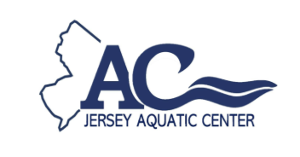Pre-Season Parent Orientation: Safe Sport
“Safety and security don’t just happen; they are the result of collective consensus and public investment. We owe our children, the most vulnerable citizens in our society, a life free of violence and fear.”
Nelson Mandela
USA Swimming is committed to fostering a fun, healthy, and safe sport environment for all its members. We all must recognize that the safety of swimmers lies with all those involved in the sport and is not the sole responsibility of any one person at the club, LSC, or national level. This means that everyone—national office, coaches, officials, parents, and athletes—is essential to creating a culture where all forms of misconduct are intolerable and eliminated as soon as possible.
The Safe Sport program has a wealth of resources, policies, best practices, tools, and procedures to help empower you to create and maintain a healthy and safe environment for your athletes. The program follows six guiding principles:
-
USA Swimming believes that every member should have a safe, healthy, and fun sport environment.
-
USA Swimming believes that every young person should be protected from abuse and safe from harm.
-
USA Swimming believes that all non-athlete members share a collective responsibility to protect our membership.
-
USA Swimming will make available training for all members to increase awareness and understanding of athlete protection policies and best practices. USA Swimming will provide a process for members to recognize and respond to any Safe Sport issues that arise.
-
USA Swimming will provide resources, information, and guidance on Safe Sport related issues to all members, including coaches, parents, and athletes.
-
USA Swimming will treat all allegations of abuse or concerns regarding athlete safety seriously and will respond appropriately and as prescribed by USA Swimming Rules and Regulations.
The Safe Sport program offers:
-
Best practice guidelines (see below)
-
Online trainings for parents, athletes, coaches, and officials
-
In-person training opportunities for LSCs and clubs, including parents, athletes, coaches, and officials
-
Model policies for electronic communication, team travel, anti-bullying, and locker room monitoring
-
Several ways to report Code of Conduct violations and inappropriate behavior: phone, email, and an online reporting form
-
A designated LSC Safe Sport Chair to attend to the local Safe Sport needs of the clubs in your region
-
Educational resources on topics such as healthy personal boundaries, bullying, appropriate social media activity, and managing peer-to-peer conflict
USA Swimming Safe Sport encourages you, as parents, to support your child’s swimming experience by attending practices and meets, celebrating your child’s accomplishments, and enjoying your child’s growth. If you ever have a concern, don’t suffer or stew in silence. Talk with your child’s coach, the club board of directors, or LSC leadership, or contact us at that national office. Safe Sport is here to ensure that you and your child have the best experience possible, but they can’t do it alone. Your involvement is important!
www.usaswimming.org/protect
Abigail Howard, Associate Counsel & Director of Safe Sport / (719) 866-3529 / [email protected]
Elizabeth Hahn, Safe Sport Senior Manager / (719) 866-3542 / [email protected]
Maggie Vail, Safe Sport Education Specialist / (719) 866-3552 / [email protected]
Best Practice Guidelines
The following Best Practice Guidelines are strongly recommended for all USA Swimming members.
-
Parents should be encouraged to appropriately support their children’s swimming experience.
-
All swimming practices should be open to observation by parents.
-
Coaches should not initiate contact with or accept supervisory responsibility for athletes outside club programs and activities.
-
When only one athlete and one coach travel to a competition, at the competition the coach and athlete should attempt to establish a “buddy” club to associate with during the competition and when away from the venue.
-
Relationships of a peer-to-peer nature with any athletes should be avoided. For example, coaches should avoid sharing their own personal problems with athletes.
-
Coaches and other non-athlete adult members should avoid horseplay and roughhousing with athletes.
-
When a coach touches an athlete as part of instruction, the coach should do so in direct view of others and inform the athlete of what he/she is doing prior to the initial contact. Touching athletes should be minimized outside the boundaries of what is considered normal instruction. Appropriate interaction would include high fives, fist bumps, side-to-side hugs and handshakes.
-
Coaches should avoid having athletes as their favorites. They should also avoid creating a situation that could be perceived as them having favorites.
-
Gift-giving, providing special favors or showing favoritism to individual athletes is strongly discouraged.
Updated: June 23, 2019


